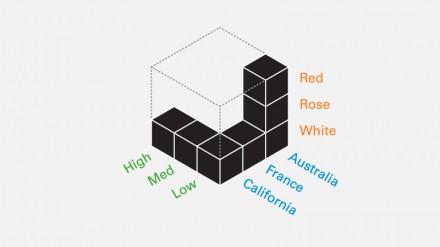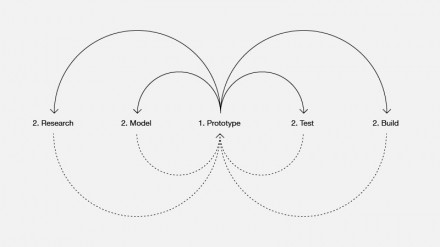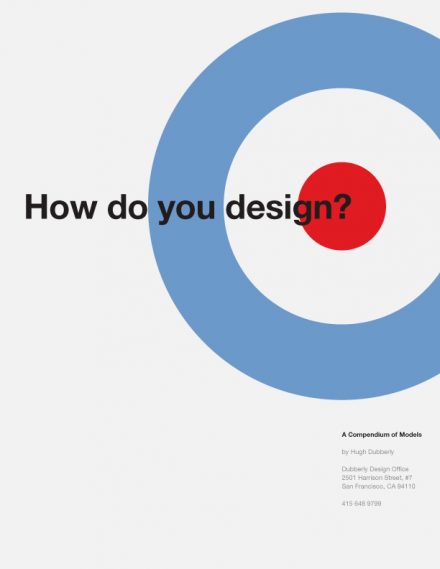-
Dubberly Design Office
2501 Harrison Street, No. 7
San Francisco, CA 94110 -
415 648 9799 phone
415 648 9899 fax
Articles
Why Horst W.J. Rittel Matters
*Full article originally published in **Design Issues**: Volume 23, Number 1, Winter 2007*
*Memoriam originally published in 1992 in **University of California: In Memoriam** a publication of the Academic Senate, University of California, under heading: “Horst W.J. Rittel, Architecture: Berkeley 1930-1990, Professor of the Science of Design,” edited by David Krogh.*
Horst Willhelm Jakob Rittel taught design and architecture for over 30 years, yet he never designed a building or otherwise practiced as an architect. (We might now recognize him as a design planner.) Even so, Rittel changed the field of design—linking design and politics—and started a line of inquiry which continues today in the field of computer programming and information science—design rationale.
[Beta] Innovation Models
*Originally created for Lance Carlson of the Institute for the Creative Process at the Alberta College of Art and Design.*
We state openly that this book is far from complete. It was created primarily as an internal reference for individuals developing the Innovation concept map. Not only must we continue to search for new—and existing—models of innovation, we must also reexamine and revise the classification of models that have already been included. Any insight or suggestion for the continued development of this book is welcomed.
If you know of any models which are not featured in this book, please feel free to [share them with us][1].
[1]: http://www.dubberly.com/contact “share them with us”
What is Systems Design?
*The following text is the pre-edited version of an interview of Hugh Dubberly by Dan Saffer. The interview was performed via email in February of 2006, and was later published in **Designing for Interaction: Creating Smart Applications and Clever Devices**.*
**What is systems design?**
Systems design is simply the design of systems. It implies a systematic and rigorous approach to design—an approach demanded by the scale and complexity of many systems problems.
**Where did it come from?**
Systems design first appeared shortly before World War II as engineers grappled with complex communications and control problems. They formalized their work in the new disciplines of information theory, operations research, and cybernetics. In the 1960s, members of the design methods movement (especially Horst Rittel and others at Ulm and Berkeley) transferred this knowledge to the design world. Systems design continues to flourish at schools interested in design planning and within the world of computer science. Among its most important legacies is a research field known as design rationale, which concerns systems for making and documenting design decisions.
Navigating Dynamic Databases
This article introduces several issues related to the problem of navigating multi-dimensional data spaces—large databases. It examines problems with trying to conform data to a single taxonomy and the limits of tree structures as navigational devices. It offers several alternative devices, and it notes the need to enable random, multi-variate filtering so that users may narrow and expand at will. It also introduces the concept of pivoting: narrowing along one path and turning (or pivoting) to expand along another path.
Becoming a Digital Designer
*The following text is the pre-edited version of an interview of Hugh Dubberly by Steven Heller. The interview was performed via email in April of 2006, and was later published in book form in 2007.*
You were a true pioneer in the digital world, when we just called it “computers,” what made you jump into the breach so early?
——————————–
When I was an undergraduate at RISD, Chuck Bigelow introduced me to digital type design. Dutch type designer Gerard Unger was also teaching at RISD. They encouraged students to focus on low resolution type. For me, that led to a summer job with Xerox working on type for some of the first laser printers. Chuck also introduced me to Don Knuth’s work on Metafont, a programming language for describing typefaces. As a grad student at Yale, I designed a typeface using Metafont. Several of my classmates from RISD also got involved in font design.
Middle-Out Design
Nearly a year after the project had begun, Dubberly Design Office was brought on board to complete the design for a handheld medical order-entry system. By applying software engineering practices to interaction design, DDO resolved critical issues—from the large and conceptual to the detailed and screen-level—and discovered a new approach to design: Middle-Out.
[Beta] How do you design?
*This book is not finished. We’ve been developing it over the past few years. It began as a manilla folder with copies of different process models. We completed the first “book” version as part of a project undertaken for Elaine Coleman and Sun’s Virtual Center for Innovation. We present this version for educational purposes only. We have obtained no permissions to reproduce any of the models. Copyrights remain with their owners.*
*If you know of any models which are not featured in this book, please feel free to [share them with us][1].*
[1]: http://www.dubberly.com/contact “share them with us”
The Information Loop
*Written for CIO Insight Magazine magazine by Hugh Dubberly.*
Industrial age companies increased efficiency through mass production. They also used the tools of mass production to talk to their customers, sending the same message to as many people as possible. But mass communication isn’t uniformly efficient. As John Wanamaker quipped, “I know half of my advertising is wasted; I just don’t know which half.”
Notes on the Role of Leadership and Language in Regenerating Organizations
We collaborated with Michael Geoghegan, Paul Pangaro, and Peter Esmonde to produce a booklet for Sun about leadership and language.
Below are a few interior spreads. You can also [download a PDF][1] of the entire booklet.
[1]: http://www.dubberly.com/wp-content/uploads/2008/06/littlegreybook.pdf “Notes on the Role of Leadership and Language”
Alan Cooper and the Goal Directed Design Process
*Originally published in **Gain AIGA Journal of Design for the Network Economy** Volume 1, Number 2, 2001.*
Alan Cooper is not your typical graphic designer—he’s an engineer and a card-carrying member of the AIGA. He inhabits both worlds and has something important to say to designers and other engineers.
Cooper is not one to say things softly. He’s outgoing, quick to offer an opinion or an aphorism, and seems to like nothing better than a healthy debate. His favorite topic: what’s wrong with the software that increasingly fills our lives.



